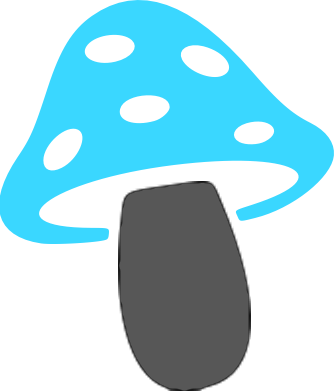Mescaline Cacti: Explore the Power of Nature
Mescaline Cacti: A Natural Psychedelic Experience
Mescaline cacti are plants that naturally contain the psychedelic substance mescaline. These include Peyote (Lophophora williamsii), San Pedro (Echinopsis pachanoi), and Peruvian Torch (Echinopsis peruviana). They have been used for thousands of years in traditional spiritual rituals in Central and South America. Their unique effects make them popular among those seeking mind-expanding experiences.
What Are Mescaline Cacti?
Mescaline is a powerful hallucinogen that produces visual effects, introspection, and a sense of connection. The most well-known mescaline cacti are:
- Peyote: A small, round cactus without spines.
- San Pedro: A fast-growing columnar cactus.
- Peruvian Torch: Similar to San Pedro but often with higher mescaline content.
Usage and Effects
Mescaline cacti are often dried or brewed into a tea. Effects begin 1-2 hours after consumption and can last 8-12 hours. Users report vivid visuals, a sense of spiritual openness, and deeper self-reflection.
- Start with a low dose to understand the effects.
- Use in a safe environment with a sober guide.
Precautions and Legality
While these plants are natural, they are not without risk. Mescaline can have intense psychological effects, so preparation is essential. Check local laws, as the cultivation or use of mescaline cacti is regulated or prohibited in many countries.
Mescaline cacti offer a unique and profound experience but require respectful and mindful handling. They can provide new insights and foster a deeper connection with nature and oneself.
The Peruvianus Torch is an impressive 25 cm San Pedro cactus. Known for spiritual and shamanic use, it naturally contains mescaline. Perfect for inner peace and universal harmony.
Grow your own San Pedro Cactus with this complete set of 20 seeds. Discover the growth of the powerful Trichocereus Pachanoi, a cactus with a rich history and unique properties.
Enhance your garden with San Pedro T Pachanoi seeds. These high-quality seeds give you a perfect start for growing beautiful, spiritual San Pedro cacti.
The San Pedro Bridgesii (min. 25 cm) is a unique cactus with natural mescaline. It has been used for centuries in spiritual and shamanic rituals for inner growth and harmony.
This Echinopsis Scopulicola, also known as San Pedro, is a 25 cm mescaline-containing cactus. Perfect for spiritual journeys and shamanic rituals. Low maintenance and almost thornless, ideal for beginners and enthusiasts.
- Available 7 days a week
- Fast Delivery
- Free shipping in the EU from €80
- Available 7 days a week
- Fast Delivery
- Free shipping in the EU from €80
- Available 7 days a week
Used for shamanic and spiritual purposes. Experience sharpened senses, intense emotions and a deep connection to the universe.
Grow your own Peyote cactus with this complete Lophophora Williamsii grow kit! Includes 20 fresh seeds, a special growing tray, and a customized soil mix for the best results.
Discover the high-quality Peyote L. Williamsii seeds from Mystic Grow. Perfect for lovers of rare and spiritual plants. These seeds ensure successful growth of Peyote cacti, known for their cultural and spiritual significance.
Experience the power of Macrogona (25-29 cm), a unique San Pedro cactus. Ideal for spiritual and shamanic applications. For a safe, calming journey to inner peace and universal connection.
Experience inner peace and harmony with the thornless San Pedro Monstrosus. This fast-growing cactus, full of wisdom and spirituality, is ideal for shamanistic and spiritual purposes.
Grow your own fascinating Lophophora Williamsii, a cactus with the natural compound mescaline. This complete growing kit includes everything needed for optimal growth and offers a unique cultivation experience!
Do you want to buy San Pedro T Bridgesii seeds? Discover our offer of 100 pieces of these high-quality seeds. Order now and enjoy fast delivery and excellent quality. Start growing your own San Pedro T Bridgesii plants today!
Discover the power of the Peruvian Torch cactus with this complete growing kit. Includes 20 fresh seeds, a specialized germination tray, and a custom soil mix for high germination rates and healthy seedlings.
Discover the powerful growth and unique effects of the Bridgesii Trichocereus bridgesii grow kit. With 20 fresh cactus seeds, a cultivation tray, and Lophophora williamsii germination soil, ideal for enhancing the natural qualities of this special cactus.
Grow your own unique Lophophora Fricii cactus with this complete kit! Includes 20 fresh seeds, special growing soil, and a convenient growing tray – everything needed for successful growth and germination.
Discover the unique Trichocereus Macrognus cactus with this complete germination kit with 20 fresh seeds. Specially designed for optimal germination and growth, including a special soil mix and instructions.
Overige categorieën in Shamanshop
Mescaline Cacti: Explore the Power of Nature
Mescaline Cacti: A Natural Psychedelic Experience
Mescaline cacti are plants that naturally contain the psychedelic substance mescaline. These include Peyote (Lophophora williamsii), San Pedro (Echinopsis pachanoi), and Peruvian Torch (Echinopsis peruviana). They have been used for thousands of years in traditional spiritual rituals in Central and South America. Their unique effects make them popular among those seeking mind-expanding experiences.
What Are Mescaline Cacti?
Mescaline is a powerful hallucinogen that produces visual effects, introspection, and a sense of connection. The most well-known mescaline cacti are:
- Peyote: A small, round cactus without spines.
- San Pedro: A fast-growing columnar cactus.
- Peruvian Torch: Similar to San Pedro but often with higher mescaline content.
Usage and Effects
Mescaline cacti are often dried or brewed into a tea. Effects begin 1-2 hours after consumption and can last 8-12 hours. Users report vivid visuals, a sense of spiritual openness, and deeper self-reflection.
- Start with a low dose to understand the effects.
- Use in a safe environment with a sober guide.
Precautions and Legality
While these plants are natural, they are not without risk. Mescaline can have intense psychological effects, so preparation is essential. Check local laws, as the cultivation or use of mescaline cacti is regulated or prohibited in many countries.
Mescaline cacti offer a unique and profound experience but require respectful and mindful handling. They can provide new insights and foster a deeper connection with nature and oneself.
























